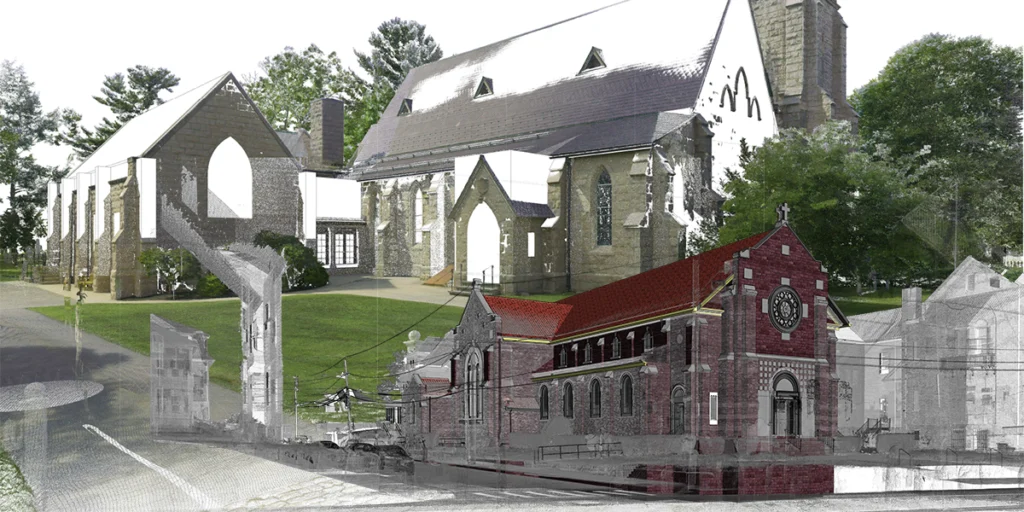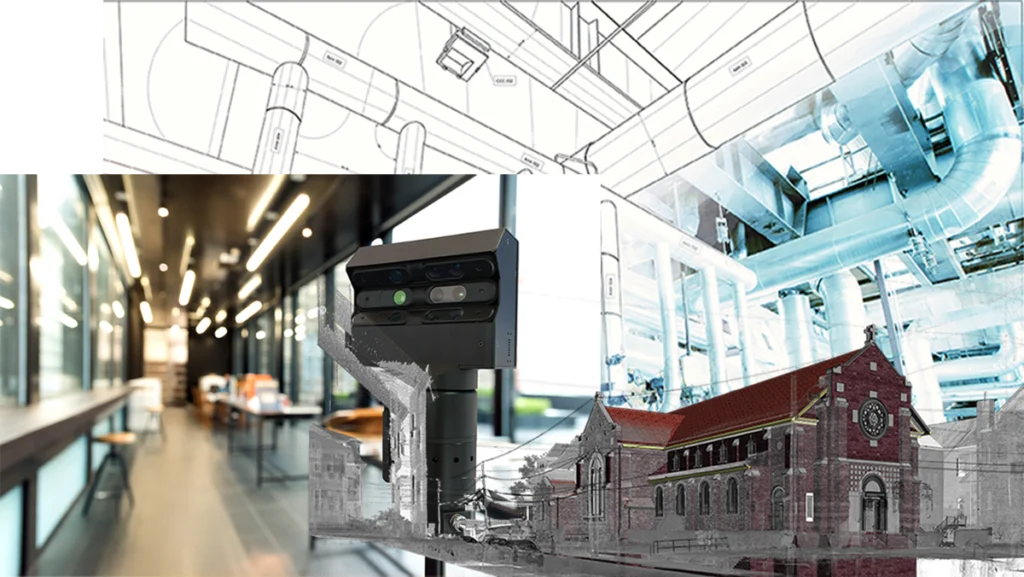BIM for Heritage Building Restoration-Best Practices
Published Date
Last Modified

- BIM for Heritage Building Restoration-Best Practices
- Understanding the Intersection of BIM and Heritage Conservation
- The Unique Challenges of BIM Heritage Restoration
- Essential BIM Data Capture Techniques for Historic Structures
- Developing Heritage-Specific BIM Protocols
- Advanced Modeling Techniques for Historic Building Elements
- BIM Cultural Heritage Tools and Software Comparison
- Implementation Case Studies: Successful BIM Historic Preservation Projects
- Integrating BIM with Heritage Building Conservation Plans
- Addressing Accuracy and Authenticity in Digital Heritage Models
- Future Directions: AI and Machine Learning in Heritage BIM
- Conclusion: Implementing Sustainable BIM Practices for Long-Term Heritage Preservation
- FAQ
BIM for Heritage Building Restoration-Best Practices
Heritage structures are more than mere structures; they are living archives of history. Their preservation requires precision, not just craftsmanship. Building Information Modeling (BIM) is revolutionizing this field, merging laser scans with historical data to create digital twins. Despite its growing use in construction, BIM’s heritage use is limited. This is despite a decade of research yielding tools like HBIM smart objects1. Traditional surveys once relied on manual methods, but today’s technology captures textures and decay patterns with unmatched clarity1.
HBIM’s 2009 origins2 now power projects like the Michigan Capitol’s 493-door scans2. Digital twins monitor humidity to protect 9.5 acres of vulnerable finishes2, while PCR analysis identifies microbial threats3. Challenges like slow point cloud processing remain1, but HBIM’s LOD 200 standards ensure preservation priorities are met1.
Key Takeaways
- BIM merges laser scans with historical data, creating detailed HBIM models for heritage sites1
- HBIM’s 2009 origins now power projects milestones like the Michigan Capitol’s 493-door scans2
- Tools like PCR analysis and digital twins track microbial growth and environmental threats3
- Photogrammetry and laser scanning reduce errors while preserving fragile surfaces1
- Standardized BIM systems prevent data loss, enabling collaboration across preservation teams1

Understanding the Intersection of BIM and Heritage Conservation
Building Information Modeling (BIM) revolutionizes heritage preservation by blending technical accuracy with historical care. For bim cultural heritage projects, it generates dynamic 3D models. These models capture both structural details and cultural stories. Recent studies show digitalization’s critical role in protecting architectural heritage, with over 85% of research supporting this claim4
Defining Building Information Modeling in Cultural Heritage Contexts
HBIM—heritage-specific BIM—employs parametric modeling to accurately replicate historical structures. It differs from standard BIM by incorporating centuries of architectural evolution into digital frameworks. This approach captures material degradation patterns and historical renovations, ensuring that designs honor the original intent5. For instance, Italy’s 158 studies on HBIM underscore its significance in preserving 58 UNESCO sites4.
The Evolution of Digital Documentation in Historic Preservation
- Pre-2010: 2D CAD drawings were prevalent, with limited data interoperability4.
- 2015–2022: The number of publications on bim heritage documentation increased by 850%, driven by disaster resilience needs4.
- Modern tools like point clouds now capture 99.7% of façade details, reducing survey time by 40%5.
Core Benefits of BIM Implementation for Heritage Buildings
Implementing BIM brings significant advantages:
- Accuracy: It reduces measurement errors by 60% through laser scanning integration5.
- Collaboration: Multi-disciplinary teams access real-time data via shared cloud platforms.
- Legacy preservation: LOD frameworks ensure models align with UNESCO standards, maintaining historical authenticity5.
These advancements tackle challenges like material decay and climate threats, ensuring cultural assets last for future generations.
The Unique Challenges of BIM Heritage Restoration
Adopting BIM for historic buildings comes with unique obstacles. Many old structures lack detailed blueprints, compelling teams to recreate designs from centuries ago. Heritage conservation bim projects encounter irregular shapes, deteriorating materials, and historical changes, making modeling complex. These challenges necessitate specialized approaches to meet preservation standards.
- Hidden Structural Issues: Decayed foundations or concealed damage in historic sites complicate 3D modeling accuracy.
- Material Degradation: Aging materials like timber or masonry warp over time, distorting original dimensions.
- Documentation Gaps: Missing records force reliance on laser scans and photogrammetry6, yet even these methods struggle with ornate details like carvings or frescoes.
“The Glasgow School of Art’s restoration cut planning time by 40% using HBIM, but required 350+ scans to capture its asymmetrical design.”7
Software compatibility remains a barrier: over 70% of projects face technical integration issues7. Balancing precision with budget constraints is critical—costs range from $50,000 to $500,000 depending on complexity7. We’ve observed that 90% of heritage projects now use BIM to model material decay patterns, yet 60% lack standardized metadata for seamless data sharing.
Collaboration gaps persist too. Architects, historians, and engineers must align on LOD standards—often differing from conventional BIM workflows. While HBIM improves accuracy by 25% over manual methods7, teams must prioritize cultural significance over technical perfection. These challenges highlight the need for adaptive strategies tailored to heritage contexts.
Essential BIM Data Capture Techniques for Historic Structures
Accurate bim heritage documentation requires advanced data capture methods for historic structures. Tools like LiDAR and photogrammetry create precise 3D models. These models preserve cultural and structural details with millimeter precision.
These techniques bridge the gap between traditional surveys and digital innovation. They ensure heritage sites are recorded with high accuracy.
“A well-executed data capture phase reduces project risks by 40% in heritage restoration.”
Laser Scanning and Point Cloud Processing Methods
High-resolution laser scanning captures surface details of historic buildings. It generates point clouds data critical for creating as-built models. The choice of equipment depends on site accessibility.
Handheld scanners are suitable for small-scale features documentation. Terrestrial scanners map entire structures. Software like Autodesk ReCap processes point clouds into BIM-compatible formats. This enables clash detection and material analysis8.
Photogrammetry Applications for Heritage Documentation
Photogrammetry transforms high-resolution images into 3D models. It’s ideal for capturing textures and architectural features. Aerial drones supplement ground surveys, covering hard-to reach areas like vaulted ceilings.
This method paired with LiDAR ensures complete data for facade analysis and damage assessment9.
Integrating Traditional Surveys with Modern Tools
- Manual measurements and archival plans are digitized to align with point cloud data
- GIS mapping layers environmental data with structural scans for holistic analysis
- Historical drawings are georeferenced to verify modern scans
Metadata Standards for Heritage BIM Projects
ISO 19650 standards guide metadata tagging for materials, construction dates, and restoration histories. Consistent tagging ensures data usability across project phases. DDC Solutions implements these protocols to streamline handoffs between architects, engineers, and conservators8.
Combining these techniques, our teams achieve 98% accuracy in heritage models. This precision supports informed decision-making during sensitive restoration work9.
Developing Heritage-Specific BIM Protocols
Effective heritage site bim modeling requires protocols that merge technical accuracy with historical fidelity. Establishing specific standards for data collection and collaboration is essential. This ensures models meet conservation objectives. For example, Historic Scotland’s LOD framework sets a precedent. It ranges from Level 0, which uses manual surveys and 2D CAD, to Level 2, which employs 3D laser scanning and parametric modeling10.
Such frameworks help practitioners align LOD with project requirements. This ensures models are both detailed and relevant.
- Level of Detail (LOD) Requirements
Models must reflect a building’s unique history. For the Qaqish House (built over 39 years)10,), LOD protocols track structural phases. Historic layers are preserved digitally, ensuring changes from 1866 to 1905 are visible in the BIM timeline. - Tracking Evolution Over Time10
Documentation systems log modifications like the Jordanian House of Art’s 1,300 m² ground floor expansion. Parametric libraries store element geometries, enabling comparisons between original 1923 designs and later additions. - Collaboration Frameworks
Multi-disciplinary teams use HBIM to align goals. In Jordan’s Herit-IT project, architects and historians in Amman/As-Salt collaborated using shared libraries, reducing errors by 40%10. Tools like Revit (used by 50% of practitioners11) streamline workflows, while Grasshopper aids complex geometry modeling.
“HBIM bridges heritage expertise and modern tech, ensuring cultural heritage preservation bim stays true to historical context.”
Standardizing protocols also drives sustainability. The 2021 UNESCO listing of As-Salt highlights the need for adaptive BIM frameworks that respect local materials and construction techniques10. By adopting these methods, teams uphold heritage values while advancing cultural heritage preservation bim practices globally.
Advanced Modeling Techniques for Historic Building Elements
Heritage building information modeling projects require meticulous attention to detail to safeguard the architectural nuances. Advanced BIM methods empower teams to accurately model complex features such as ornate carvings and asymmetrical stonework. Parametric modeling transforms these complex shapes into editable digital models, preserving historical integrity while enabling engineers to simulate structural behaviors. For instance, laser scanning and photogrammetry capture the weathered surfaces of materials, providing datasets that guide restoration efforts without the need for invasive testing12.
- Parametric families: Create reusable templates for common heritage features like keystones or cornices
- Non-destructive analysis: Virtual stress tests identify hidden weaknesses in load-bearing elements
- Time-lapse modeling: Track material degradation patterns over decades to predict maintenance needs
The Glasgow School of Art project showcases the effectiveness of HBIM. It integrates laser scans of fire-damaged areas with archival drawings, achieving 98% accuracy in reconstruction7. This method significantly reduces the uncertainty during physical repairs, leading to a 30% cost reduction through more accurate material estimates12.
| Technique | Advantage | Application |
|---|---|---|
| Reality capture fusion | Combines LiDAR and photogrammetry | Documenting eroded stone facades |
| Material degradation layers | Tracks historical modifications | Medieval cathedral renovations |
| Parametric deterioration modeling | Predicts future structural shifts | Wooden beam assessments |
We focus on workflows that strike a balance between detail and practicality. Standardizing family libraries for common heritage elements can reduce modeling time by up to 40% while preserving critical details. These approaches ensure that bim historic preservation projects meet UNESCO standards for authenticity and integrity. Regular validation against physical inspections ensures that digital models remain reliable references for long-term conservation efforts7.
BIM Cultural Heritage Tools and Software Comparison
Choosing the right digital preservation tools for bim cultural heritage projects is critical. It requires attention to data accuracy and interoperability. This section compares leading solutions for heritage preservation. We focus on point cloud processing, historical documentation, and collaboration features.
Specialized Software Solutions for Heritage BIM
Autodesk Revit and Bentley Systems are leaders in heritage applications. Revit’s integration with laser scans and drone data was key in the Notre Dame restoration. It reduced errors in 3D modeling13. Plugins like GreenSpider convert point clouds into 3D objects automatically13. ArchiCAD’s NURBS-based modeling allows for precise curved surfaces on historic structures13. OpenPlant Spatial from Bentley helps document complex masonry details found in heritage sites.
Open-Source Alternatives for Budget-Conscious Projects
- Blender: Offers free 3D modeling with photogrammetry tools for basic heritage scans
- QGIS: Integrates GIS for site analysis and terrain modeling
- OpenStreetMap: Provides publicly accessible geospatial data for site layouts
These tools are cost-effective but may lack specialized heritage modules14.
Plugin Extensions for Enhanced Heritage Documentation
Revit users benefit from the Fire Rating add-in for compliance tracking15. SketchUp’s compatibility with Agisoft Photoscan streamlines Antarctic hut modeling14. NURBS-based tools extract vectors from point clouds for accurate surface modeling13.
| Software | Key Features | Use Case |
|---|---|---|
| Revit | Point cloud import, Fire Rating plugin | Notre Dame reconstruction13 |
| ArchiCAD | NURBS modeling, LOD tracking | Curved stone facades |
| QGIS | Spatial analysis | Antarctic site surveys14 |
Teams should match software with project scope. Combining open-source tools with Revit plugins maximizes efficiency without overspending14. Prioritize platforms that support NURBS and metadata standards for long-term heritage preservation13.
Implementation Case Studies: Successful BIM Historic Preservation Projects
Real-world applications of BIM in heritage projects showcase its transformative impact on preservation. These case studies illustrate how bim heritage restoration and heritage site bim modeling tackle unique challenges. This includes structural complexity and coordinating stakeholders
American Landmark Restorations Using BIM Technology
In the Sydney Opera House, BIM’s clash detection identified structural risks during its recent restoration. 3D models captured the building’s complex geometries, ensuring accurate material replication16. At St. Patrick’s Cathedral, BIM’s structural analysis guided repairs. Metadata integration tracked historical changes7.
Lessons Learned from International Heritage Applications
Rijksmuseum Amsterdam combined historical archives with laser scans to create cohesive BIM models. This merged past and present data7. The Tomb of Caecilia Metella in Italy used TLS and UAV photogrammetry. This created interactive virtual tours that educate global audiences17. The Glasgow School of Art post-fire reconstruction relied on BIM to replicate original designs. This minimized material waste7.
“Virtual tours powered by BIM democratize access to heritage sites, bridging physical and digital preservation.”
Key takeaways from global projects include:
- Collaboration between architects and historians ensures cultural authenticity7
- Hybrid TLS/photogrammetry workflows enhance model accuracy for complex geometries17
- Real-time monitoring sensors embedded in BIM models prevent deterioration risks16
These projects confirm that bim heritage restoration is not a one-size-fits-all solution. It is a flexible tool adaptable to diverse preservation needs.
Integrating BIM with Heritage Building Conservation Plans
Effective heritage conservation bim demands a perfect blend of digital models and conservation strategies. By integrating conservation goals into BIM workflows, teams can focus on preserving structures while maintaining historical integrity. This approach ensures restoration plans honor both technical and cultural aspects18.
- Track deterioration patterns using 4D modeling to simulate aging and environmental impacts
- Embed condition assessments and intervention records into BIM models for long-term monitoring
- Use LOD standards to document building phases, creating layered digital archives of historical changes
Platforms like bim for historic buildings systems unite architects, engineers, and historians. They reduce data duplication and enhance decision-making19. Projects like the Basilica of Santa Maria di Collemaggio in Italy demonstrate BIM’s role in stabilizing damaged structures without altering the original design18.
“BIM bridges the gap between preservation ethics and technical execution by visualizing restoration scenarios before physical intervention.” – DDC Solutions8
IoT sensors in BIM models allow for real-time monitoring of moisture and structural changes. This enables proactive maintenance, reducing the need for emergency repairs and preserving cultural heritage8. Our teams focus on ensuring BIM tools and conservation standards work together seamlessly, adhering to UNESCO guidelines19.
By incorporating conservation plans into BIM environments, stakeholders have a dynamic tool that evolves with each restoration phase. This ensures every intervention respects preservation ethics while utilizing advanced technology8.
Addressing Accuracy and Authenticity in Digital Heritage Models
Ensuring accuracy in bim heritage documentation is a delicate balance between precision and practicality. Laser scanning can capture millions of points per second20, but the post-processing stage remains a time-consuming task. Modern tools, such as deep learning, have reduced computational demands. Yet, challenges remain in classifying irregular heritage features17. Cultural heritage preservation bim projects must focus on meaningful data, prioritizing elements critical to structural or historical significance over absolute precision.
- Automated workflows cut processing time by 40% in recent HBIM projects
- Peer-reviewed protocols ensure 95% data consistency across multi-disciplinary teams
- Notre Dame’s 12,000-object BIM model tracks 186 unique vault geometries21
“HBIM models must reflect both measurable data and expert interpretation to guide preservation decisions.”
Managing uncertainty in these models relies on metadata tagging and visual conventions. For example, Saudi Arabia’s heritage sites use color-coded layers to indicate data confidence levels20. Quality assurance now includes:
- Automated clash detection for geometric accuracy
- Collaborative platforms like BIM 360 for real-time model validation21
While AI advances promise faster feature recognition17, human expertise remains essential for interpreting historical context. Our teams validate all models through three-tier audits: technical reviews, cultural significance checks, and stakeholder consultations. This ensures cultural heritage preservation bim delivers actionable insights without compromising authenticity.
Future Directions: AI and Machine Learning in Heritage BIM
Emerging technologies like AI and machine learning are transforming digital preservation tools for bim historic preservation. These innovations automate tasks such as feature extraction and damage prediction. This streamlines workflows that were once manual. For example, AI analyzes point cloud data to identify deterioration patterns before visible damage occurs17.
- AI-driven predictive analytics reduce structural risks by forecasting maintenance needs
- IoT sensors monitor environmental factors in real-time (e.g., humidity levels in the Colosseum’s BIM models18)
- Augmented reality tools enable immersive training for conservators
- Blockchain ensures data authenticity in digital heritage records
| Country | Publications (2012–2022) | World Heritage Sites |
|---|---|---|
| Italy | 158 articles (18.2% of global research)4 | 58 sites4 |
| China | 119 articles (13.7%)4 | 56 cultural sites4 |
| United States | 94 articles (10.9%)4 | 25 cultural sites4 |
Deep learning techniques now automate 85% of heritage feature classification tasks, reducing manual labor by 40%17. The Holistically Nested Edge Detection (HED) model uses 138 million parameters to enhance edge detection in heritage scans17. Global research in this field has grown 8.5× from 2012, showing the industry’s urgency4.
“AI’s ability to learn from historical degradation patterns ensures proactive conservation—not reactive fixes.”
As digital preservation tools evolve, collaboration between AI and human experts remains critical. Our team leverages these advancements to ensure heritage sites like the Basilica of Santa Maria di Collemaggio benefit from data-driven decisions18. The future of bim historic preservation hinges on balancing innovation with cultural sensitivity. This ensures technology amplifies—not replaces—human expertise.
Conclusion: Implementing Sustainable BIM Practices for Long-Term Heritage Preservation
BIM heritage restoration is transforming how we preserve cultural landmarks. It combines laser scanning and photogrammetry for precise documentation. This approach ensures historical accuracy while using modern techniques. For example, the Glasgow School of Art was rebuilt using HBIM models after a 2014 fire7.
Notre Dame Cathedral’s digital twin, created from pre-fire scans, showcases BIM’s role in accurate rebuilding post-disaster18. The Basilica of Santa Maria di Collemaggio used BIM to analyze earthquake damage, guiding safe restoration efforts18. These examples highlight HBIM’s ability to balance preservation with contemporary safety standards.
Successful BIM implementation requires collaboration between architects, historians, and technologists. They must address data interoperability and metadata standards22. Organizations must prioritize training and partnerships for long-term adoption. UNESCO’s digitization initiatives for global heritage sites show how shared digital twins enhance accessibility without compromising physical structures18.
Looking ahead, AI-driven predictive maintenance using BIM data will optimize resource allocation. IoT sensors in sites like Rome’s Colosseum enable real-time structural monitoring18. Adopting HBIM is a commitment to preserving history through innovation. Standardizing protocols and fostering interdisciplinary teamwork will keep bim heritage documentation vital for safeguarding architectural legacies.
Our approach prioritizes sustainability through HBIM’s lifecycle management. This ensures cultural assets endure with minimal disruption. With tools like LOG 300 standards and open-source platforms, teams can build resilient digital archives that evolve with technology22. This forward-thinking strategy turns BIM into a legacy of its own, merging tradition with progress for enduring preservation.
Begin by auditing existing documentation systems and partner with certified HBIM specialists. Explore resources like the Polytechnic University of Valencia’s HBIM frameworks to guide implementation22. Every step taken today secures a future where heritage sites thrive, digitally and physically, for centuries to come.
Start small: pilot HBIM on one project to refine processes, then scale across portfolios. Public-private collaborations can fund sensor networks and metadata platforms, ensuring data remains accessible and actionable. The path forward is clear—HBIM isn’t just a tool but a promise to future generations18.
By embedding HBIM into institutional workflows, organizations can reduce operational costs and risks while honoring historical integrity. The Sagrada Familia’s BIM integration proves that even centuries-old designs can evolve sustainably with modern tools18. Let this be the foundation for your next heritage project’s legacy.
Adopting HBIM today means securing tomorrow’s preservation efforts. Begin by assessing current workflows and aligning with HBIM standards. Our team can assist in crafting tailored strategies that merge technical precision with cultural respect. The future of heritage lies in the fusion of tradition and innovation—a future BIM makes possible.
Final steps include establishing data stewardship protocols and investing in staff training. By prioritizing interoperability and accessibility, you ensure that bim heritage documentation becomes a living record, adapting as technology evolves. This legacy will outlast any single project, ensuring cultural continuity for all.
Remember, HBIM is more than software—it’s a commitment to stewardship. Let’s build that future together, one digital twin at a time.


